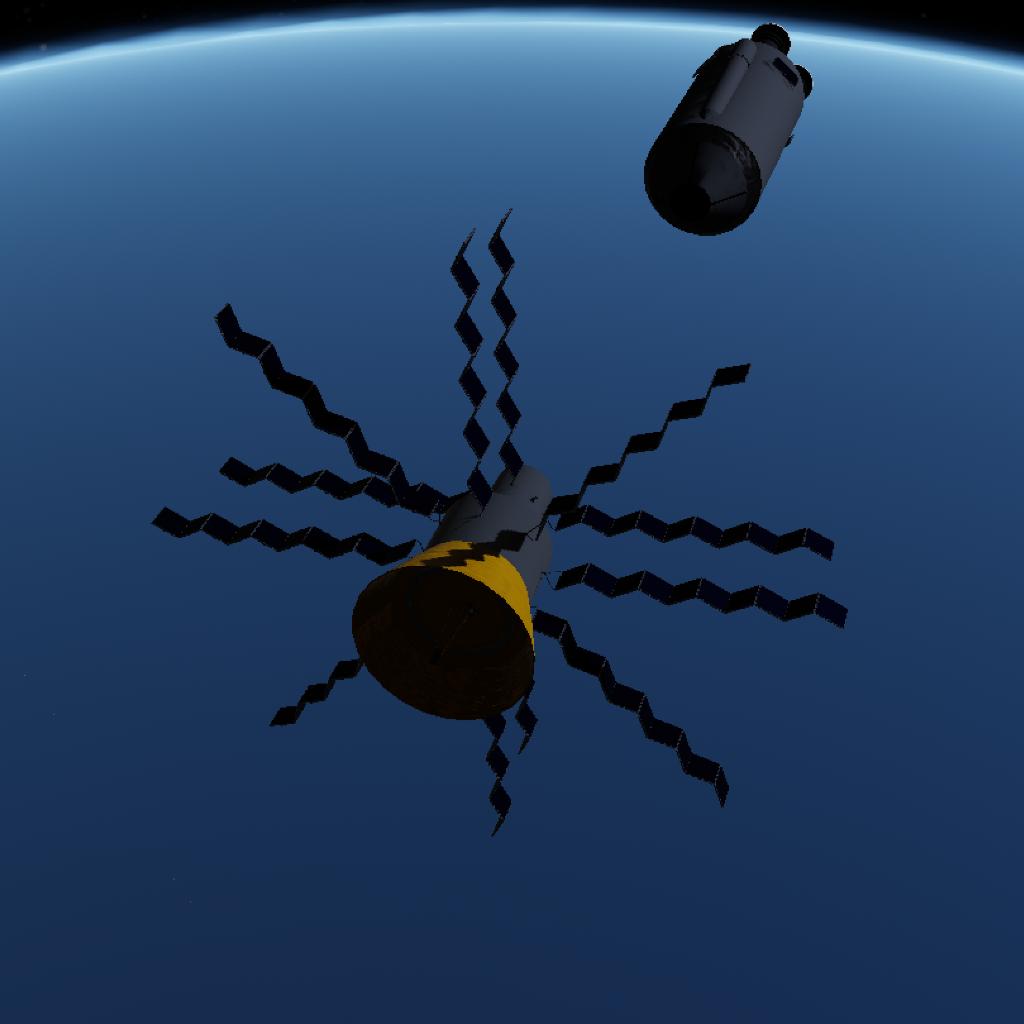Origins of the D.S.A.R Phoenix and the Caladrius Satellite
The D.S.A.R Phoenix was conceived in the early 2030s by a team of visionary engineers and scientists at the Droo Space Agency Research (D.S.A.R). The goal was to create a next-generation orbital vehicle launcher that could revolutionize space exploration and satellite deployment.
Design and Development of the Phoenix
Conceptualization:
- The idea for the Phoenix emerged from a need for a reliable and efficient launcher that could carry sophisticated payloads into orbit. The team envisioned a vehicle that combined cutting-edge technology with sleek, aerodynamic design.
Engine Innovation:
- The Phoenix is powered by two advanced methalox engines. These engines use a combination of liquid methane and liquid oxygen, providing high efficiency and thrust. The development of these engines involved years of research and testing to ensure optimal performance and reliability.
Aesthetic and Recognition:
- The Phoenix is coated in matte black, giving it a distinctive and easily recognizable appearance. This choice of color not only enhances its visual appeal but also helps in thermal regulation during its missions.
Integration with the Caladrius Satellite
Behind the fairings of the Phoenix lies the Caladrius satellite, a sophisticated piece of technology designed to harness solar energy efficiently and support various space missions.
Solar Panels:
- The Caladrius is equipped with 12 solar panels, which allow it to generate a significant amount of power from the sun. This makes it a sustainable and efficient satellite, capable of long-duration missions.
Energy Efficiency:
- The satellite's design focuses on maximizing energy absorption and minimizing energy loss. This ensures that the Caladrius can operate effectively even in challenging space environments.
Payload Capabilities:
- The Caladrius can carry a variety of scientific instruments and communication devices, making it versatile for different types of missions, including Earth observation, communication, and scientific research.
Color Scheme:
- The Caladrius features a striking silver and gold color scheme, with the satellite dish specifically highlighted in gold. This not only enhances its visual appeal but also helps in thermal regulation, protecting the satellite's components from extreme temperatures.
Inspiration and Naming
The name "Caladrius" is inspired by a mythical bird from Roman mythology. According to legend, the Caladrius is a snow-white bird that has the power to absorb sickness and heal the sick by flying away and dispersing the illness. This symbolism of healing and purification aligns with the satellite's mission to bring new capabilities and advancements to space exploration.
Mission and Impact
The D.S.A.R Phoenix, with the Caladrius satellite, has been instrumental in launching numerous satellites and conducting important space missions. Its reliability and advanced technology have made it a cornerstone of modern space exploration. The Phoenix continues to inspire future generations of engineers and scientists, pushing the boundaries of what is possible in space travel.
GENERAL INFO
- Created On: Android
- Game Version: 1.3.117.0
- Price: $258,072k
- Number of Parts: 100
- Dimensions: 61 m x 6 m x 6 m
PERFORMANCE
- Total Delta V: 5.5km/s
- Total Thrust: 4.8MN
- Engines: 10
- Wet Mass: 3.44E+5kg
- Dry Mass: 73,351kg
STAGES
| Stage | Engines | Delta V | Thrust | Burn | Mass |
|---|---|---|---|---|---|
| 1 | 2 | 4.3km/s | 4.2MN | 3.2m | 3.44E+5kg |
| 2 | 4 | 1.2km/s | 529kN | 2.6m | 73,966kg |
| 4 | 0 | 0m/s | 0N | 0s | 57,895kg |










Cool!